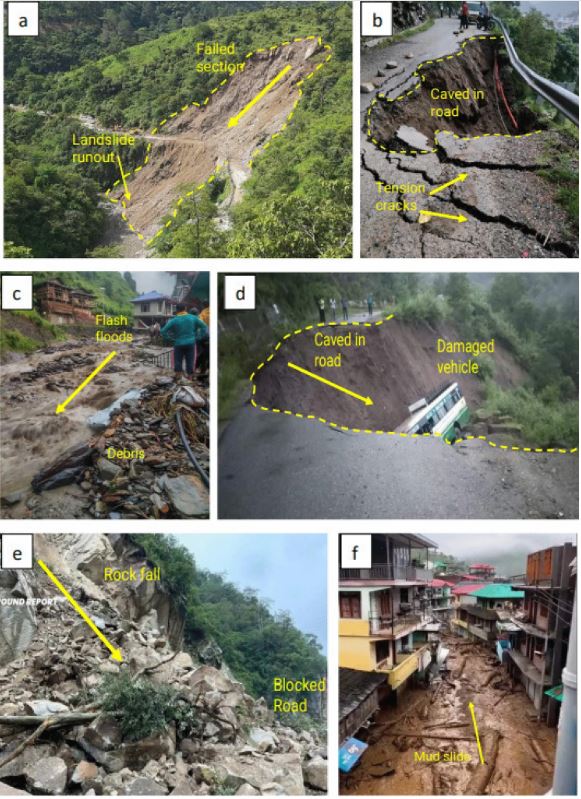The Landslide Blog is written by Dave Petley, who is widely recognized as a world leader in the study and management of landslides.

In July 2023, northern India was affected by intense and prolonged rainfall that triggered multiple landslides. Himachal Pradesh, in the NW Himalayas, was particularly badly impacted. A new paper published in the journal Landslides (Sana et al. 2024) provides an initial review and description of this event.
Sana et al. (2024) describe the origins of this event, and in particular intense rainfall over the period 9 to 11 July 2023. In this period, a monsoonal trough interacted with a slow-moving, westward-propagating active western disturbance, generating a peak daily rainfall total of 85.6 mm on 9 July. The monthly total was in the range of 400-700 mm across the state.
The impacts were dramatic. Sana et al. (2024) outline a wide rage of outcomes across Himachal Pradesh, which include:
- 223 lives lost;
- 29 flash floods between 7 and 14 July;
- 70,000 tourists stranded;
- 5,400 landslides and road cut slope failures between 9 and 11 July;
- At least 1,300 road closures.
The authors provide a number of images showing the damage, including this one:

Himachal Pradesh is very landslide prone under natural conditions, but this is being exacerbated by the impact of climate change, environmental degradation and poor quality road construction, alongside high levels of human vulnerability. A properly developed landslide management strategy is needed, but sadly this is currently lacking in Himachal Pradesh. We will see more of these events in the coming years.
Reference
Sana, E., Kumar, A., Robson, E. et al. 2024. Preliminary assessment of series of landslides and related damage by heavy rainfall in Himachal Pradesh, India, during July 2023. Landslides (2024). https://doi.org/10.1007/s10346-023-02209-1
